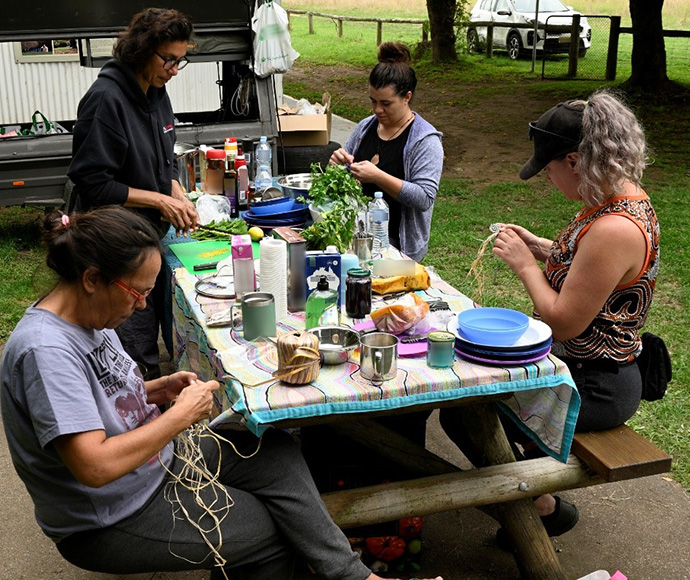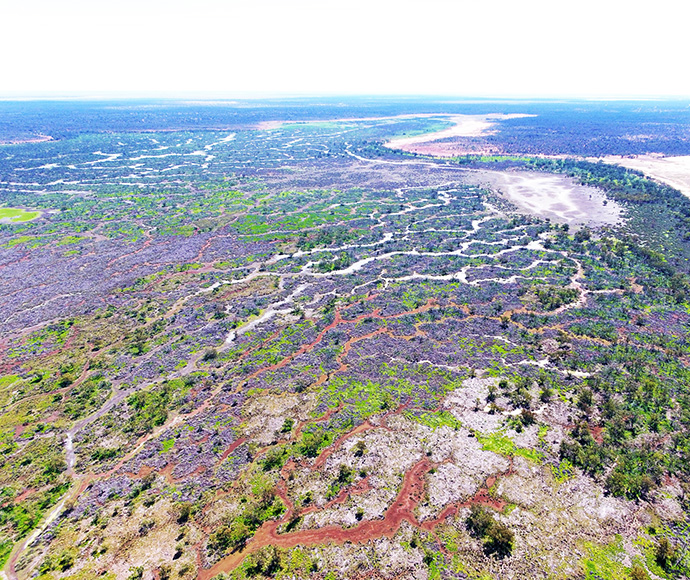Aboriginal women in science are inspiring inclusion
Inspire Inclusion is the theme of International Women and Girls in Science Day 2024. Aboriginal women in science are doing just that, inspiring others to understand and value women's inclusion, to forge a better world.
Paris Goolagong nee Norton, cultural scientist and Gomeroi, Gamilaraay/Ngati Kahungunu - Ngati Pahauwera, Ngai Tuma woman, is leading a climate change adaptation project to protect cultural values among Aboriginal communities in Narran Lakes.
'As a woman, I love being able to bring the sacred feminine into science – holistic, determined, nurture-based thinking and action.'
'I am proud to not only carry out my work in my own unique feminine way but to be working within a team that recognises this as a strength and an expertise that is critical to science now and in the future.'
Amanda Close, cultural scientist and Minjungbal, Githabal, Wiyabal woman, has been focused on a fire planning project on the South Coast New South Wales with rangers across 3 Local Aboriginal Land Councils.
'In the past 14 months, I have had the pleasure of watching the young women rangers strengthen their identity as Aboriginal women, grow in cultural knowledge and increase their already strong connection to Country, all in the context of protecting cultural values and fire risk planning.'
'This project has created an opportunity for women rangers to express their knowledge within a cultural map that will help the community.'
'Their relationships with one another have created a gentle, collaborative flow within the project. It's not about pushing hard but allowing quiet time for deep observations and evidence gathering. It's about understanding how cultural values, cultural science and western science need to work together for the care and protection of Country. Having foresight in how to work together, holds solutions for Country, for us and for future generations.'
Kate Brown is a Gamilaroi cultural scientist working on understanding the barriers to operationalise Aboriginal land and sea management practices.
'My work is about understanding how to replicate the world in accordance with the principles of Aboriginal law. Yinaar (women) and Giwiir (men) have complementary and equally important roles and responsibilities (as do all living and non-living things) to maintain Burruguu (the Dreaming). In doing so, I recognise that this worldview is shared across all NSW Aboriginal language groups using different terms and is also context and place-specific.
'The creation and nurturing of life through ceremony, ritual, and practice to ensure balance shaped by lore is an essential role of women. The treatment of Aboriginal women, our practices and language post-colonisation has created an imbalance and trauma which impacts the wellbeing of Country. I'm taking a wellbeing-focussed approach to work with Aboriginal women to understand the barriers to reawakening and implementing Aboriginal approaches and practices that will improve the wellbeing of NSW Aboriginal people and Country.'
Kerry Avery, is a Djiringanj/Gumbayngirr woman working in the Cultural Science Team. Kerry has been working on a Traditional Ecological Knowledge Guide for the conservation assessment of threatened species.
'This work is enabling me to validate cultural knowledge and practices of our Ancestors, through challenging the norms of Western science, partnering science with cultural knowledge, understanding how Aboriginal people sync with Country and apply cultural practices that is nourishing the landscape and threatened species that are calling these places home.
'I acknowledge all our female Ancestors, our grandmothers, mothers, aunties, sisters, cousins, daughters, nieces, and all Aboriginal women in science now and into the future.'

